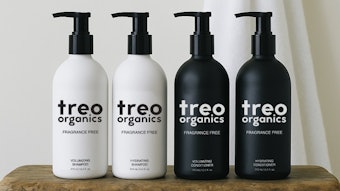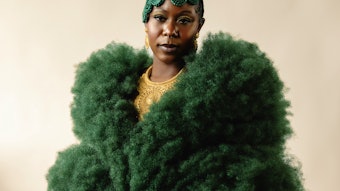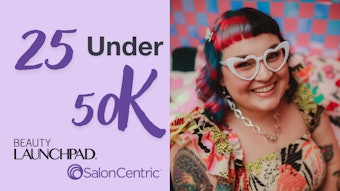
Hair loss is more than a cosmetic concern — it can deeply impact confidence, self-image, and emotional well-being. For many clients, especially women, thinning hair is a private battle they fight daily. But thanks to innovative techniques and compassionate professionals, hair extensions are becoming a vital part of the solution—not just for aesthetics, but for empowerment. To better understand how hair extensions can safely and effectively support those experiencing hair thinning or hair loss, we chatted with Victoria Lynch, founder of Remi Cachet and a leading expert in the hair extension industry.
Extensions as a Confidence Tool
Hair extensions, when used thoughtfully and professionally, can be an incredibly empowering tool. Beyond adding length or volume, extensions can restore a sense of normality for clients experiencing thinning or shedding.
"Whether it’s filling in sparse areas, balancing out asymmetrical hair loss or simply making a ponytail look fuller, these small but impactful changes can have a profound effect on how someone feels about themselves," Lynch says. "What’s most important is customizing the approach, choosing the right method, the right weight, and the right placement to ensure that the hair and scalp are not put under further stress."
As a leader in hair extensions, Remi Cachet prioritizes both the aesthetic and the integrity of the natural hair, so clients not only look great but feel seen, supported and confident.
"Extensions should support the client’s journey, not complicate it," Lynch adds.
Assess Before You Apply
The key to safely applying extensions on clients with thinning hair? A highly personalized approach.
Lynch recommends starting with a comprehensive consultation to understand the root cause of hair loss—be it hormonal, medical, stress-related or due to traction or chemical damage. Other factors you should take into consideration include the client’s density, scalp sensitivity and their lifestyle. This helps determine whether extensions are appropriate and, if so, which method will be safest.
"Not every extension method is suitable for clients with compromised hair," Lynch says.
She advises leaning towards ultra-lightweight systems, like Remi Cachet’s patented Elegance Pro Tips or Nano Weft, which are gentle, discreet and designed to place minimal stress on the scalp and natural hair.
It is also important to consider building in maintenance plans, home care routines and regular check-ins to monitor scalp health and the condition of the extensions once they are installed.
Choosing the Right Extension Method
For clients with fragile or sparse hair, extension selection is critical. Lynch recommends lightweight, low-tension methods that protect the natural hair.
Remi Cachet’s Injection Tapes are ideal, if applied as a single piece with a single sided tape tab. This reduces the weight by half, as they lay flat, mimicking natural hair growth and being gentle on the scalp.
The brand's patented Ultra Tips are another great choice, as they don’t use heat or glue and distribute weight evenly.
While clip-ins and halos can work for occasional use, they must be applied carefully to avoid stress on thinning areas.
Methods to Avoid
For clients experiencing hair loss, Lynch recommends avoiding any extension methods that place excessive tension or weight on the natural hair or scalp.
Methods like fusion bonds or sew-in wefts can be too heavy or damaging for fragile hair, unless the bond is customized to a micro-size, especially if the client has thinning or weakened strands. These techniques often require heat or glue, which can cause additional stress and breakage on removal or poor placement, or place pressure on the scalp that exacerbates hair loss.
Instead, Lynch suggests using hair pieces like toppers, which disguise visible hair loss from the hairline to the crown. These are designed to reduce stress on the natural hair, making them much more suitable for clients with compromised hair health.
Client Education Is Everything
When working with clients experiencing hair loss, education is just as important as the extensions themselves.
 "A responsible stylist always puts hair health before anything else."Courtesy of Remi Cachet
"A responsible stylist always puts hair health before anything else."Courtesy of Remi Cachet
First, clients need to understand that not all methods are suitable for thinning hair, and that their extensions will be customized to minimize stress on the scalp.
"Proper application and regular maintenance appointments are non-negotiable — these help us monitor the scalp, adjust tension and ensure everything stays comfortable and healthy," Lynch says.
It's also important to teach clients the proper steps for at-home care. Lynch encourages them to be gentle by using sulfate-free products, avoiding heavy oils near the bonds or tapes and brushing carefully with a soft-bristle or extension-friendly brush. Stylists should also teach clients how to dry their hair thoroughly at the roots to prevent matting or buildup.
"Setting clear expectations while offering emotional support helps clients feel empowered and in control of their hair journey," Lynch adds.
Taking Precautions to Avoid Further Damage
When working with compromised hair or scalp health, the top priority is protecting what’s there. It's important that stylists take necessary precautions throughout the service to avoid causing further damage. Here's a good step-by-step process to follow, according to Lynch, once you decide it's safe to apply extensions:
- Start with a detailed consultation to assess scalp condition, hair density and the cause of loss or thinning.
- The method and placement of extensions must be chosen to minimize weight and tension; lighter, more flexible systems are ideal.
- Proper sanitation and preparation of the hair and scalp before application are essential.
- During the installation, use lightweight, gentle techniques that avoid putting unnecessary tension on the hair or scalp. It's also important to leave enough space between bonds for proper scalp airflow and cleaning, and avoid placing extensions near areas of active inflammation or visible thinning. Be mindful of the client's comfort throughout the process.
- After the install, educate clients on proper at-home care, gentle brushing, using sulfate-free shampoos and avoiding heavy oils or products that can build up near the bonds.
- Stylists should continually check in with their client during and after application to ensure comfort and safety. Regular maintenance appointments are essential to monitor the condition of both the extensions and natural hair.
"A responsible stylist always puts hair health before anything else," Lynch emphasizes.
Building Safe Services Through Education
Remi Cachet takes a comprehensive approach to supporting salons and professionals in offering safe, effective extension solutions for clients experiencing hair thinning or hair loss.
"We provide extensive training to ensure that stylists understand the best techniques and products for these sensitive cases," Lynch shares. "Our product range is specifically designed with hair health in mind. Our expert team is always available for consultation, offering guidance on the best approaches for different hair types and conditions."
The brand also prioritizes aftercare, providing salons with detailed advice and resources for clients to maintain their extensions safely.  Remi Cachet takes a comprehensive approach to supporting salons and professionals in offering safe, effective extension solutions for clients experiencing hair thinning or hair loss. Courtesy of Remi Cachet
Remi Cachet takes a comprehensive approach to supporting salons and professionals in offering safe, effective extension solutions for clients experiencing hair thinning or hair loss. Courtesy of Remi Cachet
"Our goal is to empower stylists to create beautiful, healthy results while maintaining the integrity of their client’s natural hair," Lynch adds.
Remi Cachet offers specialized training and certification for professionals working with hair loss clients. It's education covers how to assess hair loss, choose the safest extension methods and apply them without causing further damage. The brand also provide ongoing support and resources, so stylists feel confident delivering both beautiful results and safe, tailored solutions for clients with thinning or fragile hair.
Emerging Innovations
Remi Cachet is constantly innovating with the goal of making hair extensions safer, more discreet and more supportive for those navigating hair loss.
The brand is currently exploring even lighter-weight materials and more breathable bond designs to reduce scalp tension and improve comfort for sensitive clients. The brand is also developing dedicated hair replacement products and are investing in advanced training resources to help stylists better understand the complexities of hair loss and offer more personalized, holistic solutions.
"Our focus is always on supporting both the emotional and physical well-being of our clients, so they feel confident, cared for and empowered throughout their journey,"











